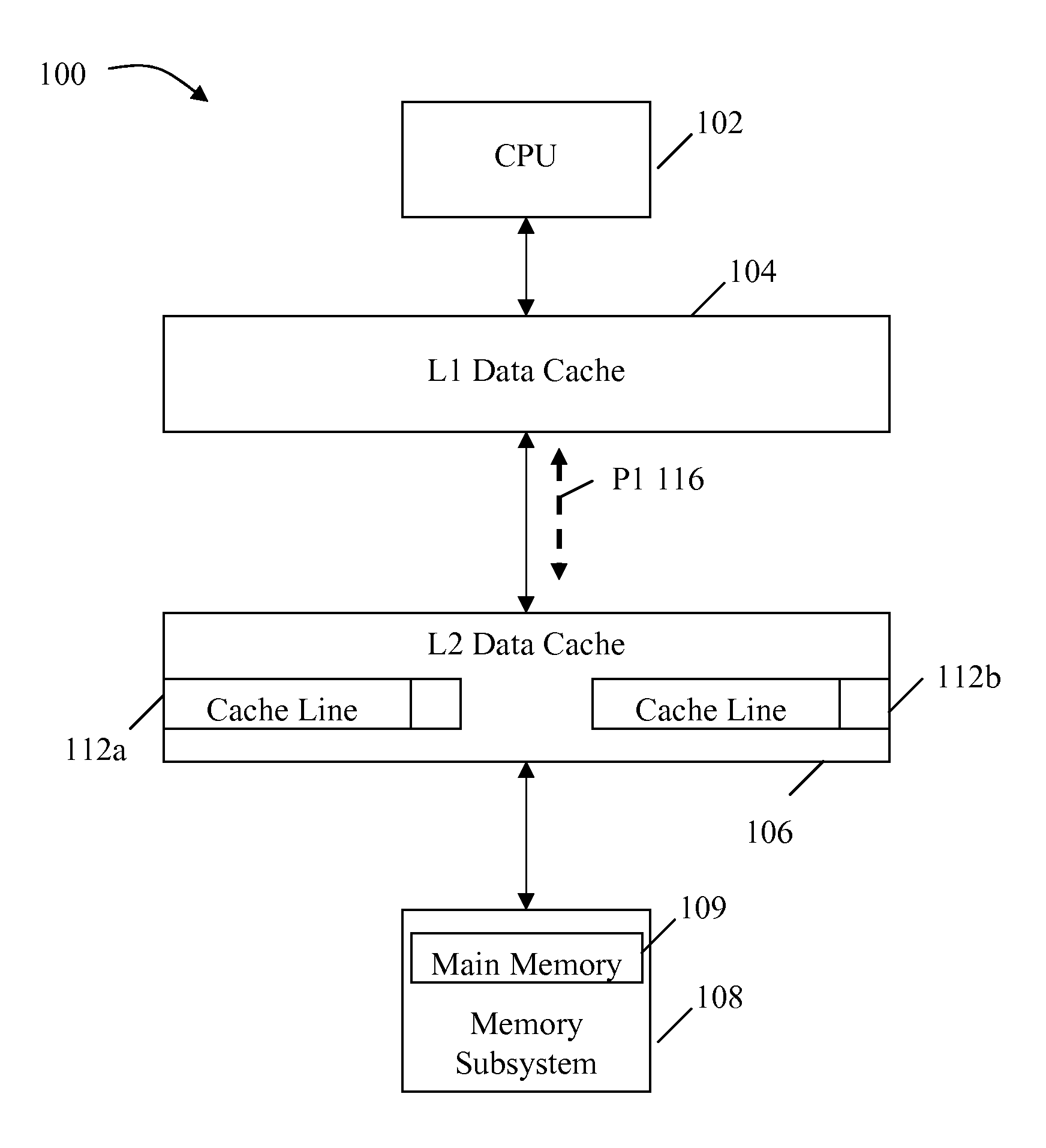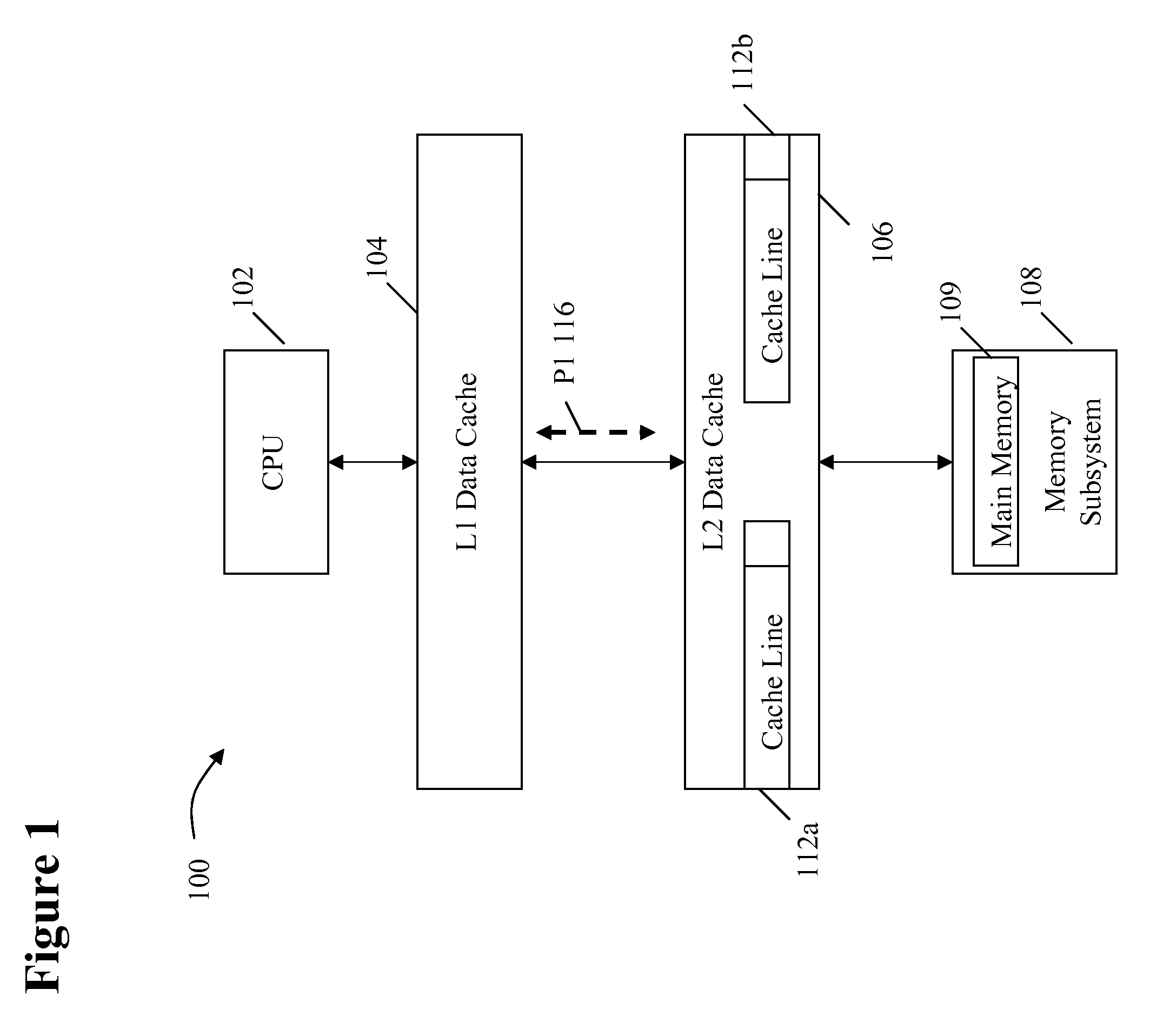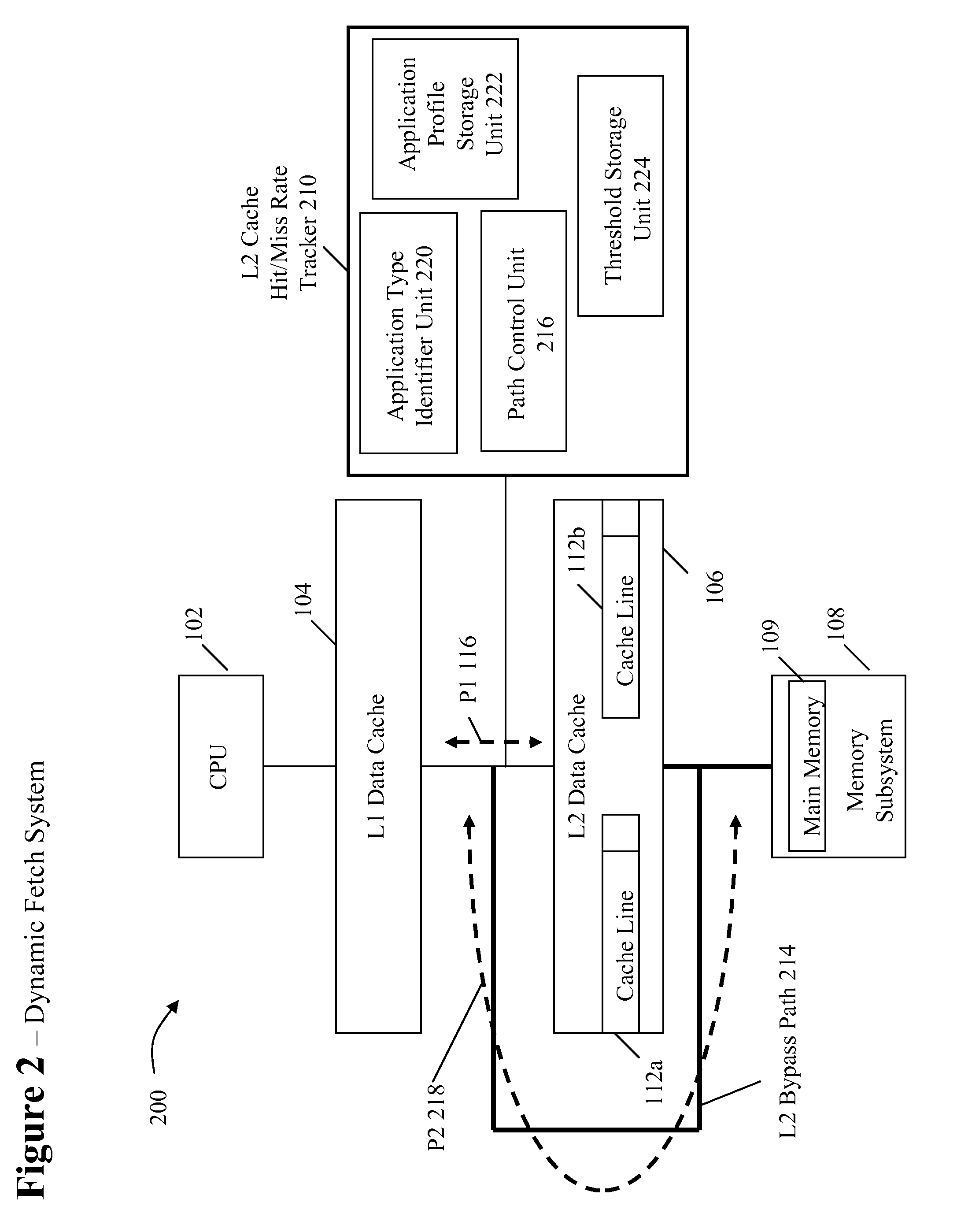System and method for dynamically selecting the fetch path of data for improving processor performance
a dynamic selection and fetch path technology, applied in the field of cache data fetching, can solve the problems of memory access latency, overhead, and delay, and achieve the effect of improving the system performan
- Summary
- Abstract
- Description
- Claims
- Application Information
AI Technical Summary
Benefits of technology
Problems solved by technology
Method used
Image
Examples
Embodiment Construction
[0020]The present invention provides a system and method for dynamically adjusting the data fetch paths for improving the performance of a processor.
[0021]FIG. 2 depicts the system 200 of the present invention. It comprises a CPU 102 which is connected to L1 Data Cache 104. L1 Data Cache 104 is the smallest Level 1 (L1) cache. For a data fetch, the processor checks L1 first; if it hits, the processor receives the data from L1 and proceeds at high speed. If L1 misses (that is, the data is not cached in L1), the next larger cache (L2 Data Cache 106) is checked for the requested data. If the requested data is located in L2, it is passed to CPU 102. L2 Data Cache 106 comprises Cache Lines 112a, 112b. L2 Data Cache 106 is connected to Memory Subsystem 106. The system of the present invention further comprises an L2 Data Cache Hit / Miss Rate Tracker 210. As mentioned above, the hit rate is the proportion of accesses that result in a cache hit and is a measure of the effectiveness of the ca...
PUM
 Login to View More
Login to View More Abstract
Description
Claims
Application Information
 Login to View More
Login to View More - R&D
- Intellectual Property
- Life Sciences
- Materials
- Tech Scout
- Unparalleled Data Quality
- Higher Quality Content
- 60% Fewer Hallucinations
Browse by: Latest US Patents, China's latest patents, Technical Efficacy Thesaurus, Application Domain, Technology Topic, Popular Technical Reports.
© 2025 PatSnap. All rights reserved.Legal|Privacy policy|Modern Slavery Act Transparency Statement|Sitemap|About US| Contact US: help@patsnap.com



